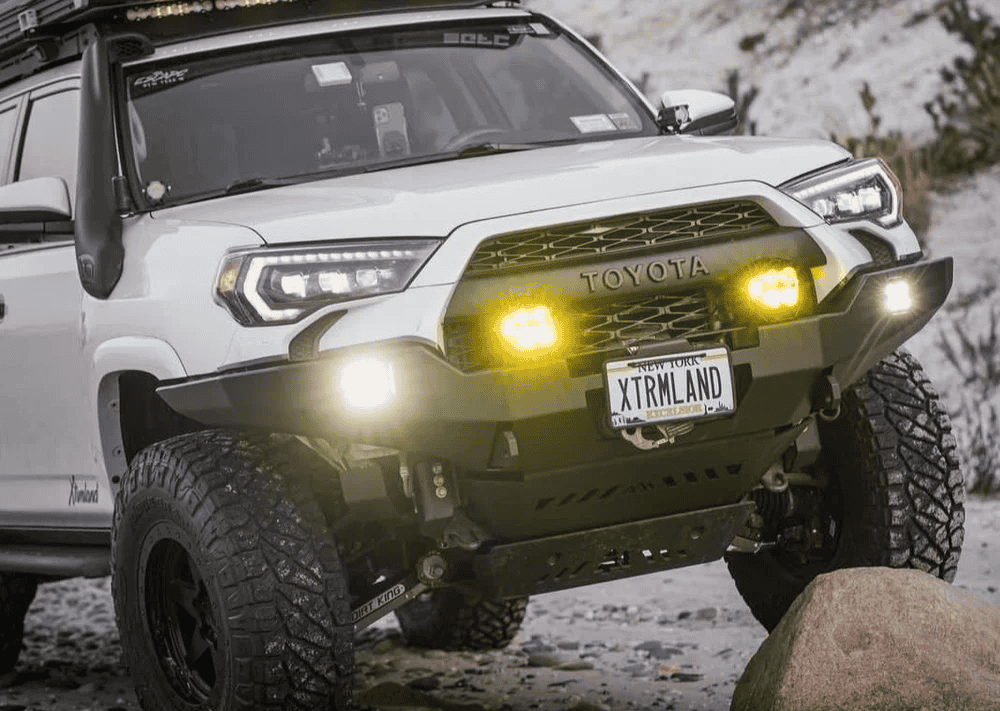Overland Vehicles

Overland recovery gear is the difference between a quick self rescue and a long wait for help. Start with recovery points that are frame mounted and rated. Add a winch sized to at least one and a half times vehicle weight, and match all rigging to that working load. The safest setups rely on redundancy, clear communication, and steady inputs rather than brute force.
A well rounded kit begins with the winch itself, fairlead, and line protection. For rigging, carry a tree saver strap, two soft shackles, one steel shackle as a heat tolerant backup, and a snatch block or recovery ring to change direction or reduce line load. Include a line damper, quality gloves, and a protective sleeve for abrasion zones. Round it out with traction boards, a shovel, and a tire repair kit to handle the most common setbacks.
Many recoveries never need the winch. Air down first to widen the contact patch and gain grip. Use traction boards to create a ramp and reduce sink in sand or snow. A compact shovel shapes the path and frees axles. Repair punctures on the spot with a plug kit, then air back up with a compressor.
A complete winch kit should travel as a system. Store winch gear cleanly in a weather resistant bag so you can deploy it fast. Soft shackles reduce weight and simplify connections to recovery points and tree savers. A snatch block or recovery ring enables double line pulls for heavy loads and lowers winch motor strain. A well chosen winch recovery kit also includes short and medium length extensions to reach distant anchors.
Before tension, inspect every component. Confirm the line is spooled evenly, the fairlead is aligned, and no bystanders are inside the danger zone. Keep the line off sharp edges with a sleeve or board. Use slow, steady pulls and stop early if the line starts to bury. Communicate with clear hand signals and keep the driver focused on steering and brake control.
Selecting anchors is the art of recovery. Trees make excellent anchors when protected with a wide tree saver strap placed low on the trunk to minimize movement. In open terrain, bury a spare wheel or use ground anchors designed for sand or loose soil. For multi point pulls, triangulate loads so no single anchor exceeds its rating.
Line choice matters. Synthetic rope is lighter, easier to handle, and safer under recoil, but it needs sleeves over rocks and heat protection near the drum. Steel cable resists abrasion and heat better but requires careful handling to avoid frayed strands. Whatever you choose, keep the first wraps snug on the drum to maintain holding power and spool under light tension after each use.
Plan the pull like a mini project. Estimate resistance, choose single or double line, and stage gear within easy reach. A damper placed midway on synthetic rope helps reduce snap back energy. Keep the engine running to support battery voltage, and pause to feel the motor and line for heat. If the vehicle does not move after a few seconds of tension, reassess rather than increasing force.
Know your numbers. Every shackle, strap, ring, and hitch adapter carries a working load limit and a minimum breaking strength. Build your system around the lowest rated part and avoid improvised connections that lack stamped ratings. Do not connect to tow balls or thin sheet metal points. Practice in a safe space so you can perform each step smoothly when conditions are poor.
Preparation also means staging your winch kit for quick access. Store rigging up front, a shovel along the rear door, and traction boards outside where mud will not ruin the interior. After each trip, rinse, dry, and inspect gear. Replace anything with cuts, melted fibers, or bent pins. Maintain your winch with regular line respools, electrical checks, and a short pull test to keep everything ready.
When you want professional planning, pairing your vehicle with a matched system is the next step. Thoughtful integration protects your frame, improves approach angles, and keeps weight balanced for off road handling.
To see how a complete platform comes together, explore our overland rigs and review the range of layouts and equipment options. If you are ready for consult to installation, our custom overland upfit team designs recovery systems, mounts, and electrical support that fit your travel style. New to our shop or curious about our process and client experience, visit why choose OZK Customs.
The right overland recovery gear builds confidence. With the basics in place, your winch gear, winch kit, and winching tools become a smooth routine rather than a stressful scramble. A balanced winch recovery kit, sound training, and a vehicle tailored for trail duty will get you unstuck and back to the drive you planned.
Ready to outfit your rig with a professionally designed winch recovery kit and integrated mounts? Our team builds systems that match your vehicle, your terrain, and your travel style. Tell us how you drive and we will spec, install, and test a safe, trail proven setup. Share a few details and get a tailored overland recovery plan.
ADDRESS:
6159 E Huntsville Rd, Fayetteville, AR 72701
PHONE:
(479) 326-9200
EMAIL:
info@ozkvans.com